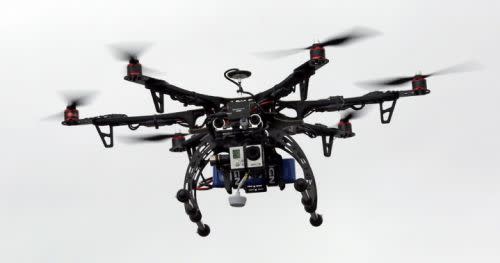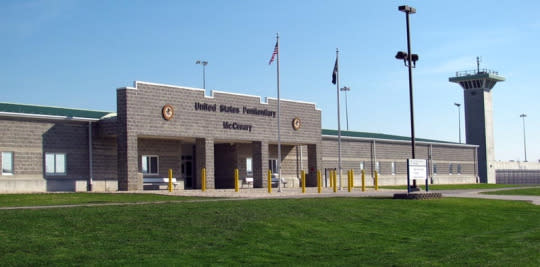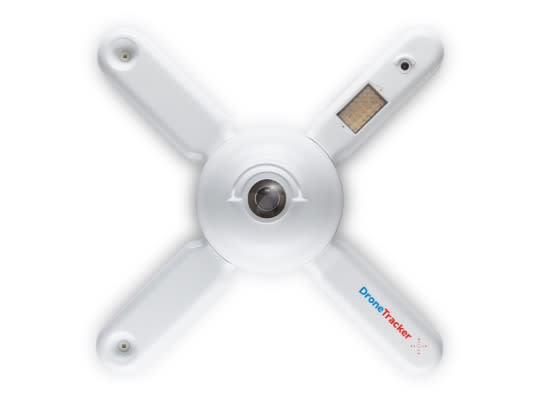Over the Wire: Prison Guards Handcuffed in Battle With Drones

Like firefighters and those who just want to relax in the privacy of their own backyards, U.S. prisons have a drone problem.
Guards at the Lee Correctional Institution in Bishopville, S.C., recently found 17 illegal cellphones in one inmate’s cell — all of them (according to a report in the New York Times) smuggled in using drones.
In Mansfield, Ohio, a drone delivery of tobacco and drugs caused a near riot in a prison yard as inmates fought over the payload. In Cumberland, Md., officers had better luck, arresting two men in a car outside the Maryland state prison there. In the car were tobacco, pornography, and drugs — and a drone.
Similar reports have come in from Oklahoma and Georgia, as well as places outside the U.S., including Canada and Russia.
Breaking into jail
The point is that these unmanned aircraft systems are clearly capable of delivering contraband over prison walls. Furthermore, it’s hard to spot them, much less find out who is controlling them.
Worse, when it comes to policing the problem at federal prisons, the U.S. Bureau of Prisons (BoP) is severely handcuffed. Despite having tons of shotgun-armed guards at its prisons, the bureau can’t simply shoot down any drone that happens to appear near a prison; the Federal Aviation Administration doesn’t allow it.

McCreary federal penitentiary in Kentucky. (Photo: Bureau of Prisons)
Guards can’t blast drones with radio waves to interfere with the control signals from their operators either: Intentional interference of that sort is illegal, according to the Federal Communications Commission.
All of which is why the BoP has issued an RFI (request for information) looking for a solution.
The RFI — a preliminary step before the agency actually hires someone to implement a solution — is soliciting ideas that will help the BoP detect and neutralize drones trying either to conduct surveillance of prisons and the areas around them or to deliver contraband (such as weapons, drugs, or pornography).
(While the BoP has jurisdiction over federal prisons only, the solutions it finds should also be available eventually to state and local facilities.)
Unfortunately for the BoP, other federal government agencies aren’t being particularly helpful. The FAA would not discuss the issue, except to say that if anyone were to drop something into a prison, that person would be guilty of violating the law. The Department of Justice would not discuss the issue of drones on the record, except to say that Yahoo Tech should contact the FAA. The FCC did not respond to requests for comments.
Complicating matters, the BoP’s RFI seems to be attracting little interest. So far, only one question has been posted regarding the issue, and that was to find out whether the BoP will fund research. (It won’t.)
Detection and registration
Still, the agency does have some options. The law does not prohibit the deployment of sensors at prisons to alert guards that a drone is approaching. Nor does it prohibit sensors that would detect a drone launch at its source. This could allow law enforcement to get to the site of the drone launch and arrest those involved.
And, it should be stated, sending a drone into a prison does violate a long list of federal laws and, if it’s a state prison, state laws as well.

Dedrone Drone Tracker. (Photo: Dedrone)
There are companies working on the problem of drone incursions. One of them, Dedrone of Germany, is already selling an anti-drone system — combining sensors and alarms — to prisons. The Battelle Institute has developed a device that projects radio waves at a drone and disables it. While that would apparently fly in the face of those FCC regulations, Battelle spokesperson Katy Delaney says such technology may be legal in some federal installations. Still, Battelle has withdrawn the product and information about it for the time being.
There may also be some relief from the FAA in the form of a drone registration requirement, which would cover any drone heavier than 250 grams (about 8.8 ounces) — large enough to deliver contraband. That rule will require drone owners to list their basic contact information with the FAA and to display a registration number on the device where it can be seen.
Right now the drone registration requirements is only a recommendation by the UAS Registration Task Force, but it is expected to be finalized before Christmas. That would mean if prison guards were to capture a drone delivering contraband, they could track it back to its owner. However, that would depend on the owner actually registering it; it’s doubtful that someone willing to fly a drone into a prison would be so scrupulous.
Which is all to say that, for now, prison operators are essentially out of luck, at least until the BoP gets some useful replies to its RFI. The whole process will then have to be repeated for state prisons, in ways to conform to individual state laws. In the meantime, the guards on the walls will be on their own.
Wayne Rash is senior columnist for eWEEK and is a longtime writer about aviation and space. He has been a pilot since 1970. He can be reached at wayne@rash.org.
More stories about drones:
